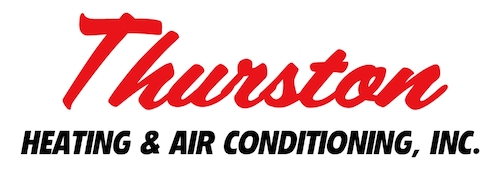
A furnace is usually a background player at home, helping keep you warm across the cold winter months. It frequently isn't noticed until something goes wrong.
One source could be that your furnace has a cracked heat exchanger. It’s a potentially dangerous issue, so it’s critical to know the evidence of a cracked heat exchanger and what to do if you are worried that might be the problem.
What Is a Heat Exchanger in a Furnace?
A heat exchanger helps transition heat from the combustion chamber inside your furnace to the air that flows inside the air ducts. It generally handles this with coils or tubes that heat the air while acting as a barrier to keep gas formed in the combustion chamber, called flue gasses, from leaking out into your home.
Is a Cracked Heat Exchanger Dangerous?
Thanks to its central role, it’s no surprise that a damaged heat exchanger can be very dangerous. A damaged heat exchanger can enable dangerous gasses – like carbon monoxide, which can be lethal – to be distributed through your home.
For obvious reasons, never use your heater if you suspect you're dealing with a cracked heat exchanger, as doing so could make the entire family ill. Contact an HVAC professional as soon as possible if you think your heating has a cracked heat exchanger that needs to be repaired.
Four Symptoms of a Cracked Heat Exchanger:
- Furnace turns off: A cracked heat exchanger could cause your furnace to turn off.
- Unusual Smells: If the air escaping your furnace has a strong chemical smell, it could be an indicator that gasses are leaking through cracks in your heat exchanger. These gasses, which can smell like formaldehyde, are a significant warning sign.
- Carbon monoxide alarm goes off or you feel symptoms of poisoning: If a cracked heat exchanger is releasing carbon monoxide into your home, your carbon monoxide alarm could go off or family members may start experiencing signs of carbon monoxide poisoning. Side effects include headaches, dizziness, weakness, nausea, vomiting or feeling tired. If your alarm goes off or you feel sick, leave the home immediately and then call for help.
- Soot: If you notice black sooty buildup around the exterior of your furnace, it’s another sign something may be seriously wrong.
What You Should Do if Your Furnace Heat Exchanger is Cracked
If you worry your furnace has a cracked heat exchanger, contact a professional with extensive experience in furnace installation Kearney right away so they can inspect your system and, if needed, handle a furnace heat exchanger replacement. Costs should fluctuate depending on the situation, but estimates often hover around $1,000 to $3,000.
Estimates aside, the good news is that heat exchangers are regularly protected by the warranty. It's a good idea to check the warranty paperwork on your furnace, because while the warranty might not cover the entire cost of repairs, it can significantly shrink your bill.
How to Prevent a Cracked Heat Exchanger in Your Home
One of the most convenient ways to avoid problems in your furnace overall is through consistent furnace maintenance. Furnaces provide the best possible return on investment when they run efficiently. Calling a certified professional to check your furnace for broken-down parts, dirty filters and other likely problems can keep you from getting a big bill later on.
It’s also a good idea to inspect your furnace filters every few months – it’s encouraged some filters be changed every 90 days or sooner if they are dirty or grimy. While the filters aren't a part of the heat exchanger itself, the strain of dragging air through a clogged filter makes the entire furnace work harder to complete its job. And the harder your furnace has to work, the more wear and tear parts like the heat exchanger will sustain.
